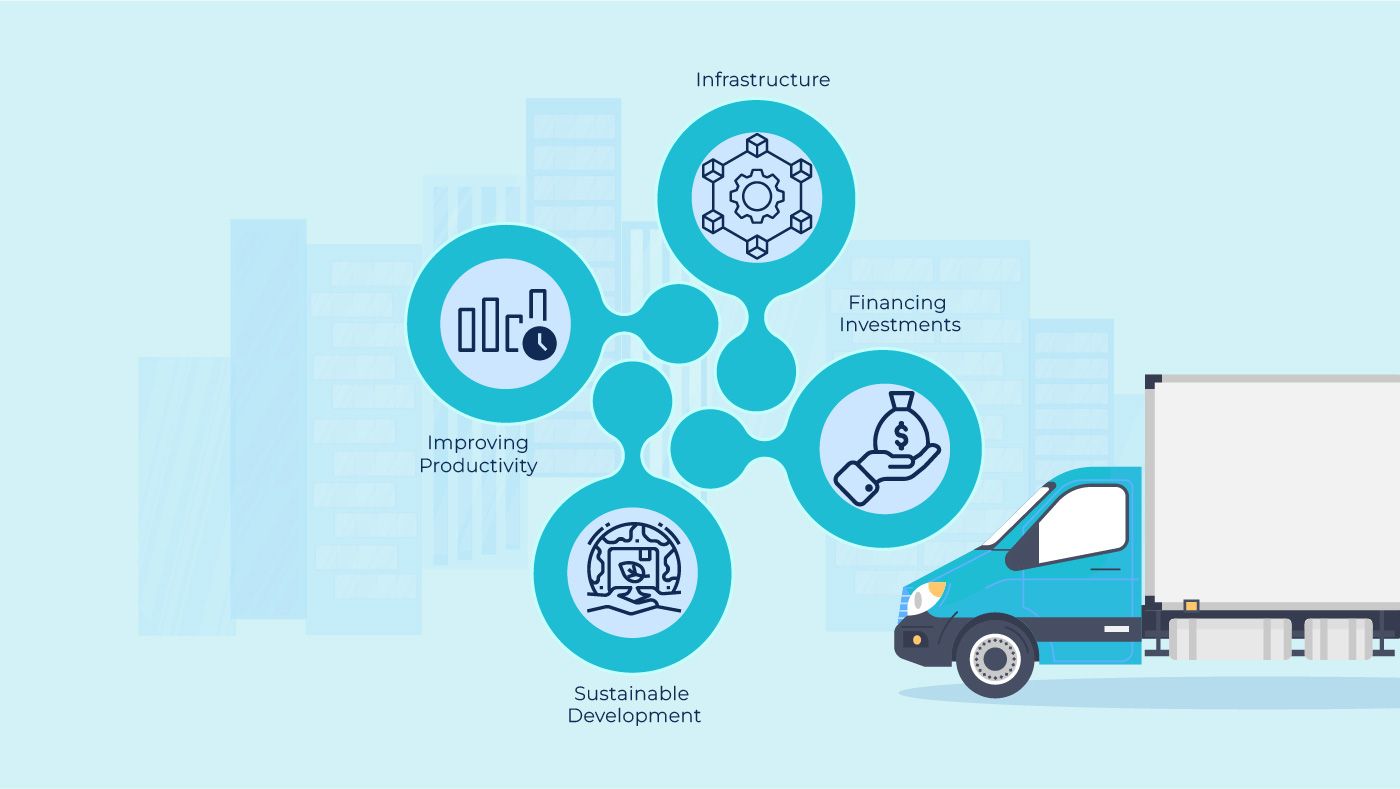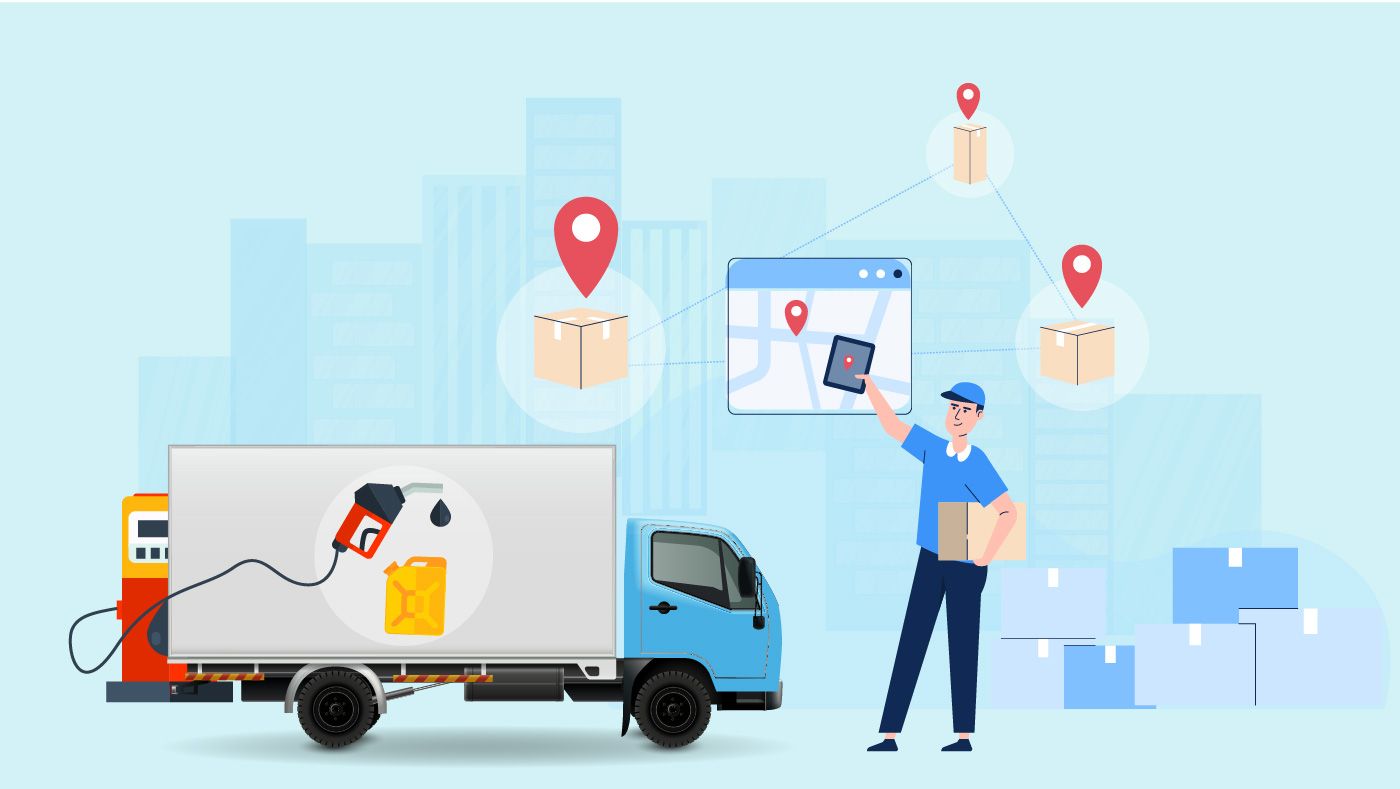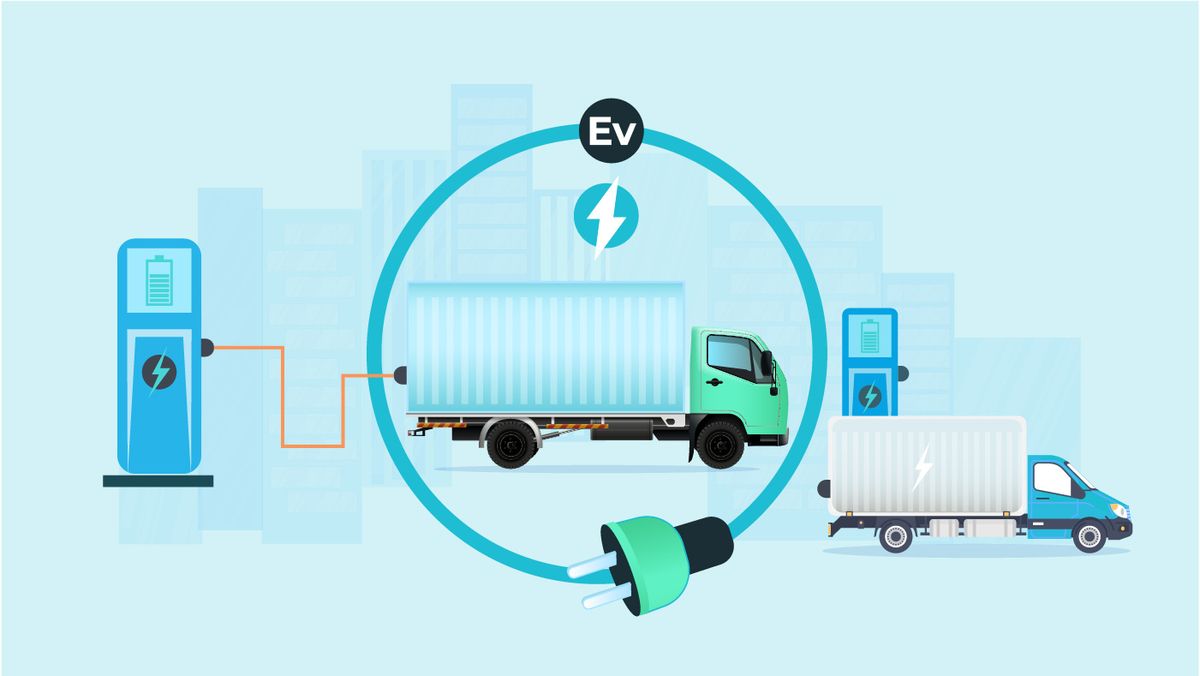
This year’s union budget is critical as it complements India’s path in its pursuit of economic recovery after two years of the coronavirus pandemic. Although experts and stakeholders across different sectors had a mixed bag reaction to the budget, there is no denying that there were a lot of positives for the Logistics & Transport Industry.
What are the key highlights for the Logistics & Transport industry?
Without a doubt, the union budget's underlying focus has been distributed across four key areas that include improving productivity, infrastructure, financing investments, and sustainable development. In addition to that, the budget also emphasized quite a bit on climate change action; perhaps the first-time climate change has received a substantial acknowledgment in the union budget.
Coming back to the Logistics & Transport industry, focusing on infrastructure development in the union budget greatly benefits the industry considering its reliance on public infrastructures such as roads, expressways, highways, logistics parks, and other public goods. Moreover, improving such critical infrastructure results in increased inflow of investments, thus, improving the overall market. To further understand what the union budget had in store for the industry, let’s look at some of the key announcements and relevant measures for the logistics & transport industry.
1. PM GatiShakti for improving multimodal connectivity and logistics efficiency
Launched in 2020, ‘PM GatiShakti Master Plan’ builds on the National Infrastructure Pipeline for 2019-2025, which was announced in 2019 with an aim to invest Rs 100 lakh crore on infrastructure in the country over the given period.
Objective of the GatiShakti Master Plan
The core objective of the scheme is to reduce the logistics cost in India by ensuring that the planning and implementation of projects across 16 different infrastructure-related ministries are carried out in an integrated and coordinated manner. In addition to reducing the logistics cost, it aims to increase the cargo handling time further and reduce inefficiencies in the sector.
Identifying the problem in the logistics industry & infrastructure development
The logistics and supply chain processes are very much fragmented in India. As a result, the Indian logistics sector accounts for an estimated 14.4% of the GDP, growing at a CAGR of 10.5%. It is much higher when compared to 6-8% spending of the more developed regions like the United States, China, or Europe. The spending gap is expected to widen, resulting in much higher spending and cost of doing business, which would negatively impact transporters and logistics operators, particularly small and medium-sized ones. Moreover, due to a lack of coordination between ministries at the centre and state level in planning and implementation of infrastructure projects, the cost of the projects ultimately ends up being exponentially higher than what is supposed to be.
How will the GatiShakti Master plan benefit the industry?
By integrating the planning and implementation of projects of all 16 infrastructure-related ministries under one roof, the scheme will allow them to coordinate better, tracking plans and ongoing projects in real-time through a digital platform. Moreover, it will bridge the gap between planning on macro-scale and respective micro-level implementation, reducing the cost of doing business and improving the competitiveness of Indian transporters and logistics providers.
Developments on GatiShakti Master Plan in Union Budget 2022-23
The first outlay of the GatiShakti scheme was announced in the Union Budget, receiving Rs 20,000 crores for 2022-23. The sectors in focus for 2022-23 are Roads, Railways, Airports, Ports, Mass Transport, Waterways, and Logistics Infrastructure.
- Formulation of the GatiShakti master plan for expressways will be formulated in the financial year 2022-23.
- The National Highways network is expected to be expanded by another 25,000 kilometres utilizing the allocated funds in 2022-23.
- Announcement on the all-mode operators being brought under the Unified Logistics Interface Platform (ULIP) for efficient movement of goods and reducing the cost of logistics in the country. ULIP will offer a single-window platform to provide information to all stakeholders assisting multimodal logistics operations benefiting all stakeholders.
- Announcement regarding awarding contracts for the development of multimodal logistics parks across four key locations through the Public-Private-Partnership (PPP) model in 2022-23.
- Announcement regarding the development of 100 GatiShakti Cargo terminals for multimodal logistics over three years.
2. Battery Swapping Policy to improve EV adoption
Our earlier piece titled Why is India’s Logistics & Transport industry bull on EV adoption explains in great detail the current EV ecosystem in India and prevailing challenges when it comes to mass-scale adoption of EVs in the commercial sector. One of the critical problems that continues to trouble the industry is the lack of charging infrastructure to support the adoption of EVs. When it comes to urban areas, they lack the space for setting up charging infrastructure at a mass scale. To counter this issue, a Battery Swapping Policy has been proposed in the Union Budget as well as Interoperability Standards for batteries are being formulated to enable the policy. In addition to that, it was also announced that the private sector would be encouraged to develop sustainable business models offering Battery or Energy As a Service to bolster EV adoption in India further. The policy is set to counter the challenge of charging infrastructure in constrained urban centres and bring innovative solutions to tackle energy problems for the EV industry. Lastly, it also offers an innovative solution to long charging times that currently discourages EV adoption at scale.
3. Push for clean energy, climate action, and low carbon economy
Several initiatives and reforms have been announced to aid India’s climate action policy and bring climate change into the more significant focus of development. Measures such as an increase in allocation of PLI scheme for manufacturing of solar modules (Rs 19,500 crores), co-firing biomass pellets in thermal plants, battery swapping policy (explained above), development of Energy Service Company (ESCO), issuing sovereign Green Bonds, are some of the key announcements related to climate action in the union budget 2022-23. Moreover, India has made strides in its pursuit of clean energy through policy and investment measures that are likely to be announced later. One such policy includes the much-awaited Green Hydrogen Policy, which is set to revolutionize the efforts to transition to a low-carbon economy. These efforts align with India’s commitments at COP26, Glasgow, towards its net-zero ambition by 2070.
Conclusion
The Union Budget 2022-23 has given strong signals that India is committed to a growth-led economy with a strong emphasis on infrastructure and growth. Although we are yet to see how much of these commitments will materialize into action, the willingness shown by the government, particularly with respect to reducing its emission and bolstering growth in key sectors, is a good signal and will positively reflect across industries benefiting stakeholders and improving investment inflow.
What is the Gati shakti master plan?
The National Master Plan for Multi-modal Connectivity, PM Gati Shakti, was introduced by the Prime Minister and is essentially a digital platform to bring together 16 Ministries, including the Roads and Railways, for integrated planning and coordinated implementation of infrastructure connectivity projects.
What is PM gati shakti?
The National Master Plan for Multi-modal Connectivity, PM Gati Shakti, was unveiled by the prime minister and functions as a digital platform that brings together 16 Ministries, including the Roads and Railways, to plan and carry out infrastructure connectivity projects in a coordinated manner. In order to move people, products, and services from one mode of transportation to another, multi-modal connectivity will offer integrated and seamless connectivity. In addition to speeding up travel for people, it will enable infrastructure's last mile connectivity.



